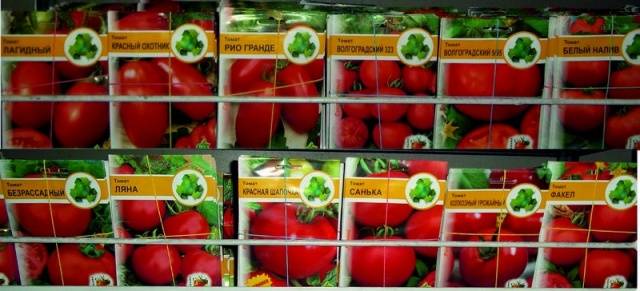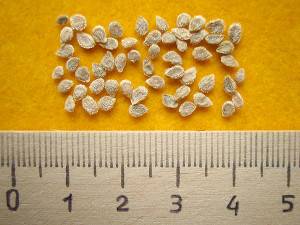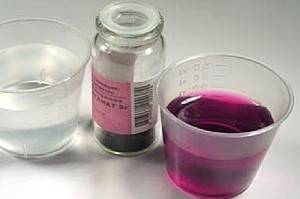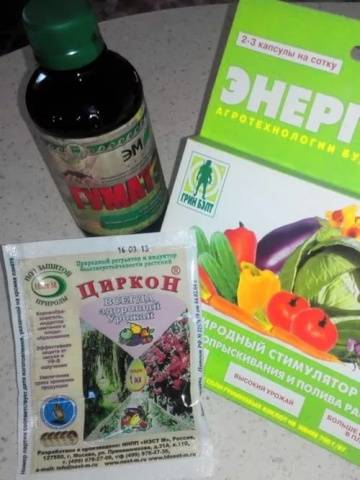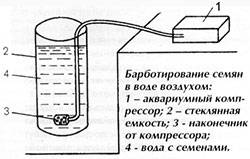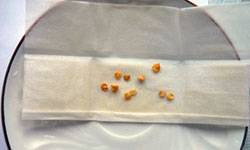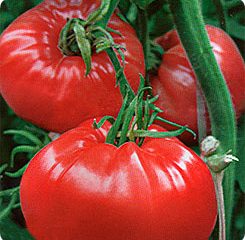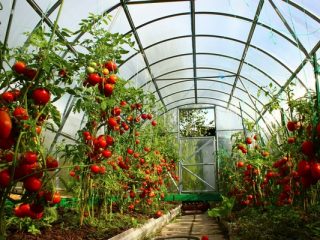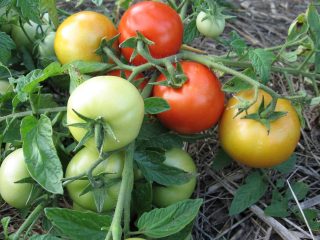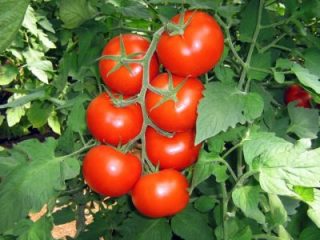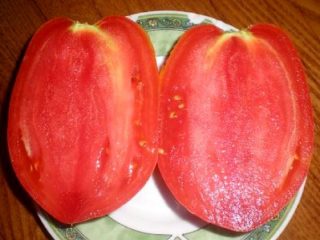Content
- 1 Rules for choosing tomato seeds for planting
- 2 Sorting tomato seeds
- 3 Disinfection of tomato seeds
- 4 Method for thermal disinfection of tomato seeds
- 5 Harm and benefits of biostimulants
- 6 Soaking and awakening the embryo
- 7 Is it necessary or not to harden tomato seeds?
- 8 What is bubbling and why is it needed?
- 9 Germination of tomato seeds for planting
Many novice vegetable growers assume that preparing tomato seeds for planting as seedlings is only necessary to obtain quick shoots. In fact, this process solves a larger problem. Many harmful microorganisms overwinter on tomato seeds. After planting untreated tomato grains, bacteria wake up and begin to infect the plant from the first days of its life. However, you cannot overdo it in this matter, as some housewives do. Soaking the seeds in several solutions for better disinfection may kill the embryo.
Rules for choosing tomato seeds for planting
To grow a good tomato, you need to be responsible when preparing seed material. They start this not when the grains have already been purchased, but at the stage of selecting them in the store.
First of all, before purchasing, you need to decide on the varieties. If you live in the northern region, it is better to give preference to early and mid-early tomatoes. Late and mid-season tomatoes can only be grown indoors under these conditions.In the southern regions, any variety of tomatoes will have time to produce a harvest in the garden.
The crop is divided according to the height of the bush. Buying seeds of determinate and semi-determinate tomatoes is optimal for growing in open ground. Indeterminate tomatoes are preferable for greenhouses.
It is important to pay attention to factors such as the purpose of the vegetable, the color of the pulp, the size and shape of the fruit. Tomatoes come in varietal and hybrid varieties. The latter are marked on the packaging with the letter F1. It should be noted right away that you will not be able to collect seeds for planting from hybrids at home.
If you want to get good shoots from purchased tomato seeds, it is important to pay attention to two factors:
- The percentage and speed of seed germination depends on the shelf life. If we compare bell peppers and tomatoes, the former have a shelf life of no more than three years. Tomato seeds remain suitable for sowing for five years. The manufacturer always displays the expiration date on the packaging. It is important to note here that the longer the seeds are stored, the slower they will germinate. If you have a choice, it is better to buy freshly packaged tomato grains.
- Seed storage conditions – a very important factor influencing the germination percentage. For tomato grains, the optimal storage conditions are a dry place with an air temperature of about +18OS. Of course, it is impossible to find out how tomato seeds were stored before they hit the store counter. However, if the paper packaging shows that it has been exposed to dampness, is heavily wrinkled, or has any defects, then the storage conditions have been violated.
It is better not to buy tomato seeds in incomprehensible packaging without indicated packaging and expiration dates.It is not a fact that from such grains, instead of the expected variety of tomato, it is not clear what can grow.
Sorting tomato seeds
After purchasing tomato seeds, you should not immediately rush to soak them. The package may contain a large number of grains unsuitable for sowing, and the time spent on them will not bring any results. The first rule for preparing tomato seeds for planting involves sorting them. The minimum that is required is to at least visually inspect the grains. You can get healthy tomato seedlings only from large and thick beige seeds. All thin, darkened, and broken grains must be discarded.
Manual culling is appropriate for small quantities of seed. But what should you do if you need to sort through a lot of tomato grains, for example, those intended to be planted throughout the entire greenhouse? The simplest method of soaking will come to the rescue. You will need a liter jar of warm water. For efficiency, you can chop 1 tbsp. l. salt. It should be noted right away that from preparing the seeds to watering the sprouted tomato seedlings, it is advisable not to use tap water. Contained chlorine impurities are dangerous for both emerging sprouts and adult plants. It is best to stock up on rain or melt water. As a last resort, you can buy purified water sold in PET bottles.
So, the saline solution is ready, let's start culling the unusable tomato seeds. To do this, simply pour the grains into a jar of water and observe them for about 10 minutes.Usually all the empty seeds float to the surface. You just need to catch them all, but don’t rush to throw them away. Often, if stored improperly, tomato grains simply dry out. Naturally, even a high-quality, heavily dried seed will float to the surface of the water, so all floating specimens will have to be visually inspected. It is better to leave any thick grains that come across for germination. Well, those tomato seeds that have sunk to the bottom of the jar can be safely taken for planting.
There is another method for selecting low-quality grains, based on school practice in a physics lesson. Dry tomato seeds are laid out in a thin layer on the table, after which they take any object that has the property of being electrified. An ebonite stick is best, but you can use a plastic comb or any other similar item. The essence of the method is to rub the object with a woolen rag, after which it is passed over the spread out tomato grains. An electrified object will immediately attract all empty seeds to itself, because they are much lighter than full specimens. This procedure must be done about 2-3 times to be 100% sure.
Disinfection of tomato seeds
Disinfection is a prerequisite for preparing tomato seeds for sowing as seedlings, since as a result of this process all pathogenic microorganisms on the grain shell are destroyed. The process of seed disinfection is popularly called dressing. The most common method of disinfecting tomato grains is to immerse them in a jar with a 1% manganese solution.After 30 minutes, the seed shell will turn brown, after which the grains are thoroughly washed under running water.
The second disinfection method is based on immersing tomato seeds in a jar with a 3% hydrogen peroxide solution. The liquid must be heated to a temperature of +40OC. The grains in it are disinfected for 8 minutes, after which they are washed with clean water.
The video shows the treatment with potassium permanganate and hardening of tomato seeds:
Many gardeners speak well of the biological preparation Fitolavin. It contains streptothricin antibiotics, which prevent the development of blackleg, wilting, and bacteriosis. The drug is non-toxic and, most importantly, safe for beneficial organisms in the soil. Tomato seed treatment occurs according to the instructions that come with the drug.
Most purchased tomato seeds do not need additional dressing, since the manufacturer has already taken care of this. Nowadays even coated tomato grains have appeared. They look like small balls, most often glued to a special tape. When planting, it is enough to make a groove in the soil, lay out a tape with seeds, and then cover it with soil.
Method for thermal disinfection of tomato seeds
Few people use this method, but it still exists and is worth paying attention to. Thermal treatment of tomato grains eliminates many harmful microbes, improves the sowing qualities of seed material, and increases yield. The method is based on heating dry tomato grains at a temperature of +30OC within two days. Next, the temperature is increased to +50OC, heating the seeds for three days.The last stage involves heating the tomato grains for four days at a temperature of +70OWITH.
The simplest method of heat treatment is considered to be heating tomato seeds for three hours on a table lamp shade at a temperature of +60OC. Some housewives have adapted to hanging seed material in bags near the heating radiator two months before the start of sowing.
Harm and benefits of biostimulants
The use of biostimulants is aimed at the rapid awakening of embryos in grains. With their appearance on the market, all gardeners began to massively process any seed material before planting. There are many factory-made drugs, for example, “Zircon”, “Gumate”, “Ekopin”, etc. Enterprising people immediately found many primitive remedies. Instead of purchased biostimulants, they began to use aloe juice, potato juice, and even the medical drug “Mumie”. However, over time, many vegetable growers faced the problem of poor yields of garden crops.
Now many vegetable growers refuse to use biostimulants. Occasionally, the use of drugs is resorted to if it is necessary to revive very dry or long-stored seed material. Why is this necessary? Everything is very simple. For example, for some reason, a favorite variety of tomatoes disappeared from the garden. Collect The grains failed, they are not on sale either, and there are still dried seeds from last year in the stash. To revive your favorite variety of tomatoes, you will have to resort to soaking in a biostimulant.After this procedure, without rinsing with water, the tomato grains are dried and immediately sown in the ground.
Soaking and awakening the embryo
The process of awakening the embryo resembles heat treatment, only in hot water. It is best to use a regular thermos for these purposes. Pure water is poured into it at a temperature of +60OC, add tomato grains, close with a stopper and leave for about 30 minutes.
After the embryo awakens, they begin soaking the seed material. To do this, use gauze bags, inside which tomato grains are poured, dividing them by variety. The bags are dipped in a jar of clean water at room temperature for 12 hours. Some people do this for a day. It is important to remove the bags from the water every 4-5 hours during soaking to replenish the grains with oxygen. The water must be changed, since the remains of pathogenic microorganisms are washed off from the seed shell.
Is it necessary or not to harden tomato seeds?
Tomato is a heat-loving crop. To adapt plants from an early age to aggressive weather conditions, the seeds are hardened. Different vegetable growers have different opinions about the usefulness of this action. Some talk about the need for hardening, others prefer to subject ready-made seedlings to this.
Tomato grains that have undergone the soaking process are sent for hardening. They are laid out on any tray or plate, and then placed in the refrigerator, where the temperature is approximately +2OC. After 12 hours, the tray is removed from the refrigerator and placed in a room for 12 hours with an air temperature of +15 to +20OC. A similar procedure is performed 2–3 times.
What is bubbling and why is it needed?
Sparging is nothing more than enriching tomato grains with oxygen.It can be carried out in conjunction with disinfection with Fitolavin. In the absence of an antibiotic, prepare a mixture of 1 tbsp. l. compost, plus ¼ tbsp. l. any jam. A drop of “Fitolavina” or a homemade mixture is diluted in a liter jar with warm water, where tomato seeds are then placed. Next, you will need the participation of a conventional aquarium compressor. It will pump air into a jar of water for 12 hours. After bubbling, the seed material is dried to a flowable consistency. Water from the jar can be used to water other seedlings or indoor flowers.
Germination of tomato seeds for planting
The germination process is the final stage of preparing tomato seeds for planting. There is nothing complicated in this matter. It is enough just to place the tomato grains between two layers of gauze or any piece of natural fabric, place them on a tray and put them in a warm place. The fabric must be periodically moistened, but do not overfill it with water, otherwise the embryos will get wet. As soon as the shell of the seed has burst and a small sprout has emerged from it, they begin to sow it in the ground.
Sow sprouted tomato seeds carefully so as not to damage the sprouts. If everything was done correctly, after 5–7 days the first shoots will appear on the surface of the soil.
